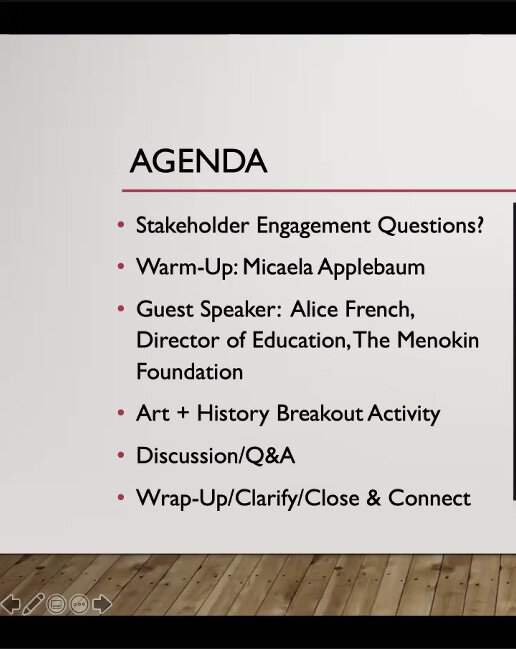Community Laboratory: William & Mary's Highland
by Alice French, Director of Education
Menokin was invited to participate in a new class led by James Monroe’s Highland postdoctoral research fellow, Dr. Mariaelena DiBenigno and postdoctoral research associate of William & Mary’s Lemon Project, Dr. Jajuan Johnson. The students attend W&M’s National Institute of American History and Democracy.
The agenda for the community laboratory included Alice French as a guest speaker.
The program, “Community Laboratory: William & Mary’s Highland” is part of W&M’s Mellon Foundation funded grant, Sharing Authority to Remember and Re-Interpret the Past. Campus-wide initiatives work to share knowledge, strengthen existing relationships, and build new collaborations that examine the afterlives of slavery in Williamsburg, Charlottesville, and beyond. In “Community Laboratory” we tried to create community — albeit virtually — using the interpretative spaces of historic sites and museums. The students examine their personal and public experiences with history; each brings a wonderful breadth of knowledge to the conversation. We come together to discuss museum studies and public history broadly: calls for social justice, inclusive education, racial reckoning, community partnerships, funding resources, diversity, sustainability, transparency, and relevance in the 21st century. We are a group of community members, artists, teachers, undergraduate and graduate students, museum professionals and public history practitioners asking questions about how we share narratives and why we need renewed commitment to better public histories.
The course requires students to build a new museum exhibit proposal. Through the semester students evaluate existing sites, define what a museum is, and all aspects of who makes up a museum. Menokin was brought in to talk about some of the ways we are incorporating our cultural landscape with the arts into our interpretation. I gave a brief overview of Menokin’s interpretation so far. Then they went into breakout rooms to view the works of 6 different artists using social justice and commentary. After making observations and comments about these artists, we discussed additional ideas for interpretation and purpose.
It’s wonderful to share and listen to new ideas and to see a greater focus on museums seeking new ways to talk about history. I hope to continue to see more classwork like this in the education sector and more examples of these thoughts in the museum field as well.







